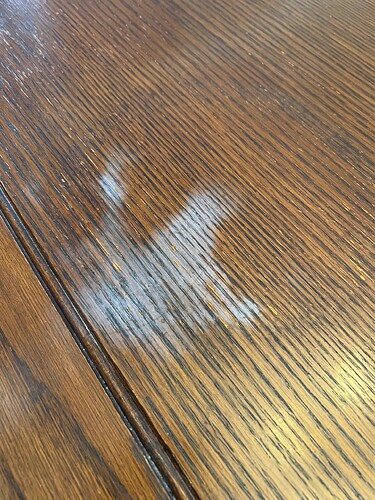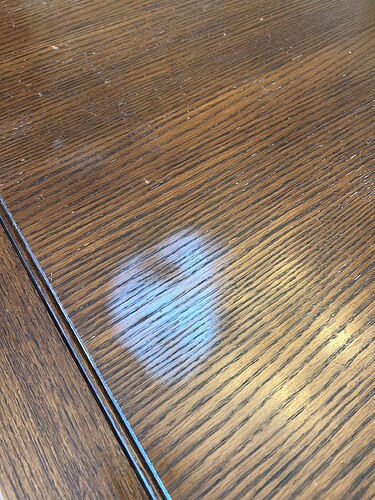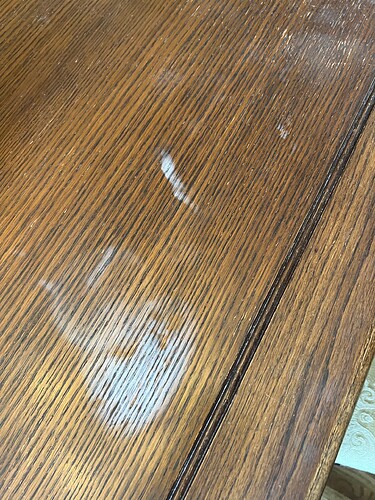Hello, I am refinishing an old table that has been in our family along time. I’ve successfully stripped the old finish off of the wood using Citristrip. It had turned into a thick black layer. I haven’t done this type of project before so I really have little idea what I am doing so my questions will probably seem pretty simplistic. The wood looks like it is still retaining the original stain which looks fine to me. Will the stripping process remove the original stain or does it just take off the top finish coats?
Can I just apply a finish layer like a polyurethane on top of wood now since I like the appearance as it is? or do i need to complete additional processing to prepare it for the final finish.
Thanks for any advice.
Jerry
Polyurethane can be applied to existing polyurethane, as long as you give it a bit of sanding before hand. Stripping is only necessary if you need to get rid of an existing paint or a water based finished. Polyurethane is pretty much just liquid plastic. It typically goes on just about anything without much trouble.
I hope that helps.
Doug
Thanks for the help Doug!
I could use some advice related to this topic. I have a table that has some water damage to the finish. I really don’t know an easy way to fix this. Does anyone know of a product that may help?
I am hoping I won’t have to refinish the whole table.
I heard that you can use an iron… so I looked that up and here is an article on various options
How to Remove Water Stains from Wood Without a Special Cleaner.
For water stains, I’ve used olive oil and vinegar mixed. Sometimes just olive oil will help.
How you repair damage to a finish, depends a great deal on what the finish product is. If you know the era the piece was manufactured, you might be able to make some educated guesses to probable types. Varnish, Shellac, Lacquer or one of the newer water based finishes.
If your finish is a perhaps a shellac or lacquer based finish, there are some things you can try. I have little experience with Varnishes or waterbased finishes.
Shellac and lacquer both have a thinner that is also a solvent. Shellac = Denatured Alcohol. Lacquer = lacquer thinner.
Doug mentioned above, roughing a surface to help a finish adhere. Because both of these finishes have one product act as solvent and thinner; you don’t have to rough the surface and you get other advantage.
Verify in a mostly hidden place that you have specifically lacquer or shellac. Rub some of the solvent/thinner from each and see of the finish softens and then is removed. Nothing mechanical, just elbow grease. If it is one of these two, you can use the chemistry involved to partially remove the finish that has a water stain, or also heat related damage, by carefully applying small amounts of the solvent to the area. Use a rag to rub the area, and watch the finish be slowly absorbed by the cloth rag. Allow it to dry, then you can carefully apply new finish to the area, with a clean rag. Multiple thin coats. Buff out after two or three thin coats, to see how you are matching the apparent depth of the rest of the piece.
John Nicholas


